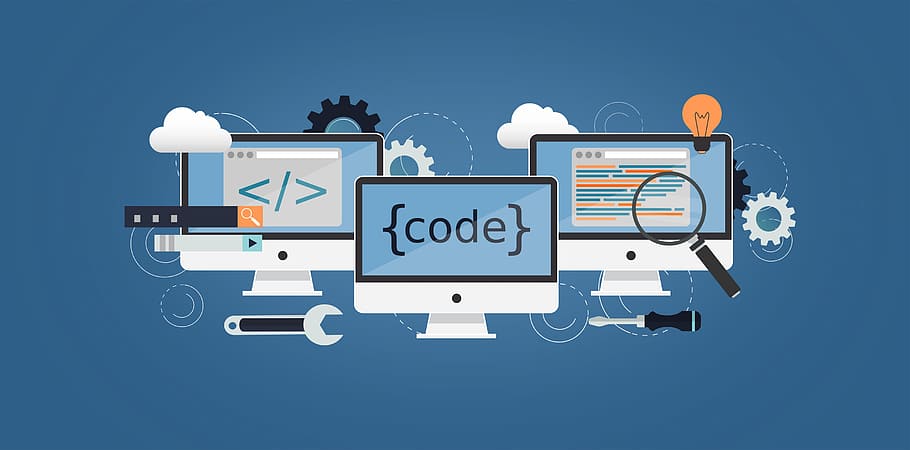Since 2015, the Software as a Service (SaaS) industry has grown to an estimated value of $31.5 billion. In 2022, it is expected to grow by up to $171.9 billion, according to the research. This means more companies are building SaaS products. After all, cloud computing makes SaaS products cost-efficient, scalable, and reliable. Are you looking to create Software as a Service (SaaS) products for your company? Then, this blog is for you. Read on.
What is a SaaS Application?

A SaaS application refers to a software licensed Software as a Service application. Using the SaaS approach, companies can market their applications as a service where customers can subscribe. These services are hosted with the help of the cloud, which means the application or customer data doesn’t have to be physically installed on the computer.
Here are some key benefits of SaaS applications:
- There is no need to buy expensive hardware, which makes it very cost-efficient.
- SaaS applications can be upgraded or even downgraded, making SaaS applications scalable.
- Cloud service providers ensure customers’ data is stored in a safe and secure place using encryption strategies.
- Since the cloud is a network of various servers, even if one server goes down, the app won’t shut down.
Here are some more benefits of SaaS architecture for companies and developers:
- Lower up-front costs mean developers can attract a large customer base.
- As potential customers subscribe to the product regularly, developers can make consistent revenue.
- Companies can offer a trial period, allowing customers to identify if the application can fulfill their needs.
- Users can get new features and updates without purchasing new versions of the applications.
Tips for Building SaaS Products Efficiently
A SaaS application allows service developers to gain a stable source of income through user subscriptions, which allow them to regularly update their applications. But this doesn’t mean customers will be willing to subscribe to any SaaS product.
Some products might be able to cater to only a specific group of consumers, such as industry professionals. Other products might have subscription-free alternatives.
This is why many companies wonder how to build a SaaS product that not only operates well but also fulfills its purpose. Are you also wondering how to make Software as a Service product and tap into cloud technology? Below you will find some tips for building result-driven cloud-based applications:
1. Offer a Service that Your Customers Want
With so many SaaS products available in the market, customers simply won’t sign up for every application. This is why companies should identify what their customers want and optimize their service accordingly.
For instance, if a customer wants to edit an Instagram image, they won’t subscribe to an application because they might only want to do it one time. Plus, there are many free online tools that offer the same service.
But if a customer wants to edit a video using complicated tools as part of their job, they would be willing to make monthly payments for a SaaS product.
This shows that a SaaS business model works best when the application:
- Help customers save money
- Provide recurring services
- Supports a larger user base
2. Do Market Research
You might have a revolutionary idea, but it is possible someone else has already worked upon it. Instead of getting swept up in the SaaS hype, you should conduct market research and identify your competitors to ensure your service is unique and innovative.
Are your competitors wondering how to develop SaaS product? Are they providing exactly the same services as you want to offer? Your product can only stand out in the market if it offers far more benefits than those offered by your competitors.
3. Choose the Right Technology Stack
Obviously, you can’t ignore the technical steps for developing a SaaS product. And the first step to building a Saas product is to select a technology stack to run the web app. To do this, you will need various tools for the front-end application, such as JavaScript or HTML. For the server-side, your team will have to employ programming languages like PHP, JavaScript, or Ruby.
A SaaS product is incomplete without a proper database. You can choose either MySQL or PostgreSQL as your back-end storage. Finally, you will have to choose a server for your application, such as Nginx or Apache. Your choices will depend upon your product’s scalability, potential profits, and costs.
Final Takeaway
By relying on cloud applications and building SaaS products, many companies have managed to grow significantly. However, before developing the product, you should conduct all the required research, test the product, and ensure it is profitable in the long run.
The post Tips for Building SaaS Products Efficiently appeared first on The Crazy Programmer.
from The Crazy Programmer https://ift.tt/VaRfSAC
Comments
Post a Comment